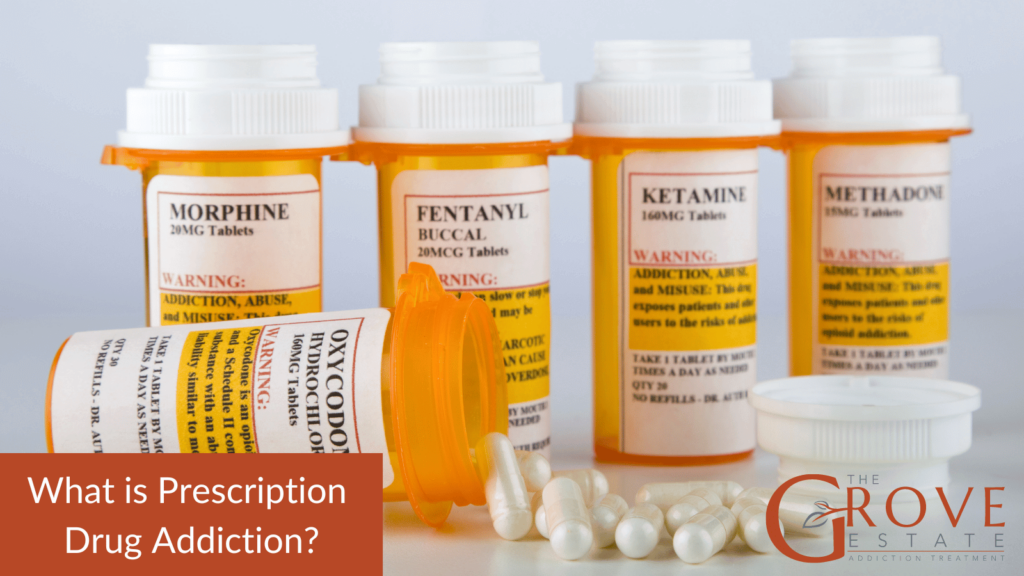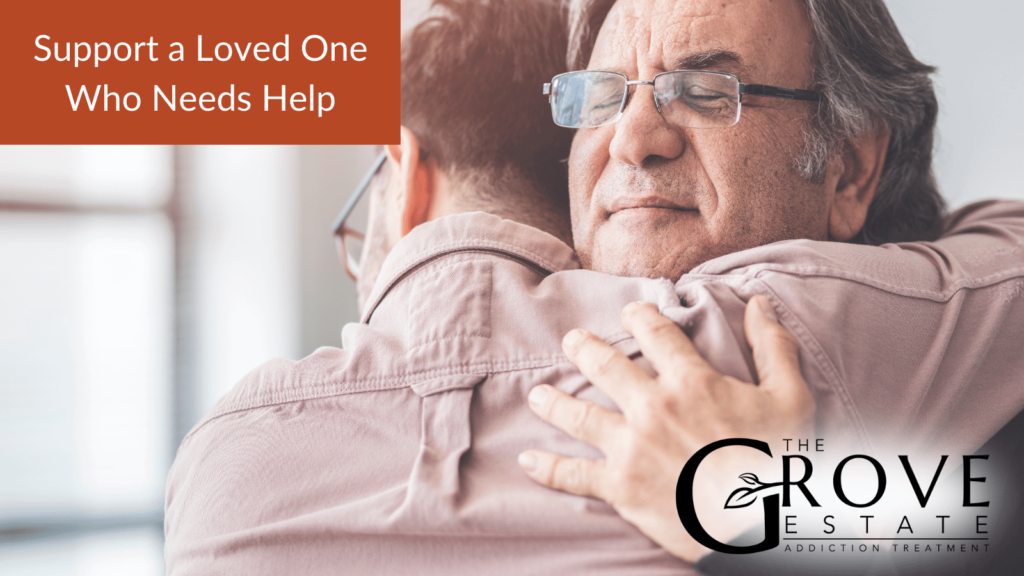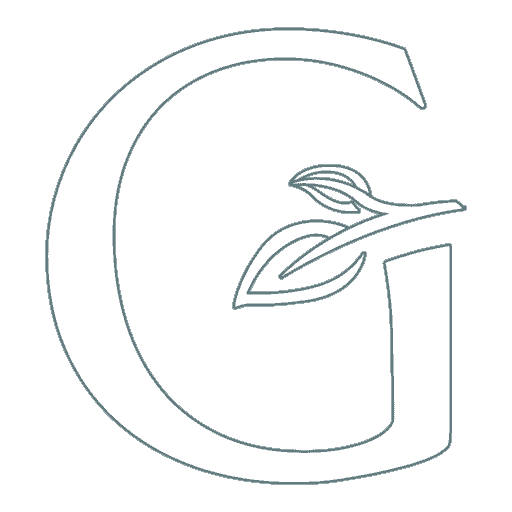Prescription drug addiction represents a significant public health challenge across the globe. This form of addiction occurs when individuals use medication in a way not intended by the prescribing doctor, or by someone for whom the medication was not prescribed. According to the National Institute on Drug Abuse in 2021, approximately 14.3 million people aged 12 or older in the United States reported misusing prescription psychotherapeutic drugs in the past 12 months. The impact on society is profound, with millions affected by addiction, leading to increased healthcare costs, lost productivity, and profound personal suffering.
Recognizing the types of prescription drugs that are most susceptible to misuse is important for prevention and treatment. Commonly abused classes include opioids (for pain), benzodiazepines (for anxiety and sleep disorders), and stimulants (for ADHD and narcolepsy). Each drug type carries its own risks and potential for dependence.
Treatment options vary depending on the addiction type but typically involve a combination of medication-assisted therapy, counseling, and support groups. Understanding these treatments and the underlying issues leading to addiction is essential for effective intervention and recovery.

What is Prescription Drug Addiction?
Prescription drug addiction occurs when an individual cannot control their use of medication prescribed by a healthcare provider, even when it causes harm. This addiction often develops because the medication affects the brain’s reward system, potentially leading to physical dependence and compulsive behaviors associated with addiction.
There is a clear distinction between dependency and addiction with prescription drug use. Dependency is primarily a physical phenomenon that arises from regular, prescribed medication use, leading to withdrawal symptoms if the drug is abruptly discontinued. This occurs as the body adapts to the presence of the drug, often developing tolerance, which necessitates higher doses to achieve the same effect.
Conversely, addiction encompasses not only physical dependence but also a psychological drive to continue using the substance. Individuals struggling with addiction will persist in their drug use despite experiencing significant adverse effects on their health, personal life, and social interactions. This condition involves a complex interaction of psychological factors, environmental influences, and social dynamics, and addressing it typically requires a comprehensive intervention strategy.
What are the 3 Types of Prescription Drugs Abused?
Prescription drug abuse typically involves three main categories: opioids, central nervous system (CNS) depressants, and stimulants. These medications affect the brain’s reward system, can alter mood or behavior, and carry a high potential for addiction due to their powerful effects on the body’s chemistry.
Opioids
Opioids are commonly prescribed for pain relief. Examples include morphine, oxycodone, hydrocodone, and fentanyl. These drugs produce euphoria, pain relief, and a sense of well-being by activating opioid receptors in the brain and nervous system. However, they also depress respiratory function and can lead to physical dependence and addiction, even when used as prescribed. According to the Centers for Disease Control and Prevention (CDC), in 2021, opioids were involved in over 75% of all drug overdose deaths in the United States. The risk of overdose is significant, partly due to the development of tolerance, where more of the drug is required to achieve the same effect.
CNS Depressants
This category includes tranquilizers, sedatives, and hypnotics, such as benzodiazepines (Valium, Xanax), barbiturates (phenobarbital), and sleep medications (Ambien). CNS depressants are used to treat anxiety, panic attacks, stress, and sleep disorders. They work by slowing down brain activity through the enhancement of the neurotransmitter GABA, leading to relaxation and drowsiness. According to the National Institute on Drug Abuse (NIDA), benzodiazepines, a common class of CNS depressants, were involved in over 30% of prescription drug overdose deaths.Despite their benefits, they are highly addictive and dangerous when combined with other medications or alcohol, increasing the risk of life-threatening respiratory depression.
Stimulants
Prescription stimulants, like Adderall and Ritalin, are prescribed to treat attention deficit hyperactivity disorder (ADHD) and narcolepsy. They enhance concentration and energy by increasing the levels of dopamine and norepinephrine in the brain. According to the Substance Abuse and Mental Health Services Administration (SAMHSA), approximately 5 million Americans misused prescription stimulants in 2021, including drugs like Adderall and Ritalin. While effective for their intended uses, they are misused for their energy-boosting and euphoric effects, leading to serious side effects such as heart problems, anxiety, and severe psychological addiction.
Each of these drugs interacts with the body’s systems in ways that are beneficial when used correctly and dangerous when abused. The potential for addiction to these substances underscores the importance of careful prescription and monitoring by healthcare professionals.

What are the Signs and Symptoms of Prescription Drug Addiction?
Recognizing the signs and symptoms of prescription drug addiction is imperative for early intervention and effective treatment. Both behavioral and physical indicators can signal abuse or addiction. Special attention to these warning signs can help identify individuals who may need help.
Behavioral Signs
- Increased Usage: Gradually using higher doses or using the medication more frequently than prescribed.
- Preoccupation with Medication: Spending excessive time obtaining, using, or recovering from the effects of the drug.
- Doctor Shopping: Visiting multiple doctors to obtain more prescriptions.
- Secrecy and Withdrawal: Becoming secretive or withdrawing from friends and family.
- Neglecting Responsibilities: Failing to meet obligations at work, school, or home.
- Risky Behaviors: Engaging in dangerous activities, especially when under the influence, without concern for personal safety.
- Legal Problems: Encountering legal issues, such as arrests for DUI, stealing, or forging prescriptions.
- Continued Use Despite Problems: Using drugs despite knowing the harm they’re causing to health, relationships, or livelihood.
Physical Signs
- Tolerance: Needing more of the drug to experience the same effects.
- Withdrawal Symptoms: Experiencing symptoms such as nausea, shaking, and sweating when not using the drug.
- Change in Appearance: Notable weight loss or gain, poor personal hygiene, or other changes in physical appearance.
- Unusual Sleep Patterns: Sleeping much more or less than usual, or at odd hours.
- Physical Dependence: Experiencing withdrawal symptoms when attempting to quit.
- Health Issues: Manifesting new health problems related to drug use or worsening of existing conditions.
What are the Risks and Complications of Prescription Drug Addiction?
Prescription drug addiction can lead to a host of risks and complications that affect not only the physical health of an individual but also their social and emotional well-being. The impact is often profound, affecting various aspects of a person’s life and well-being.
| Category | Risks and Complications |
| Health Risks | Cardiovascular Issues: Increased risk of heart attacks and strokes, particularly with stimulants.Liver Damage: Especially from the abuse of medications processed through the liver.Neurological Effects: Potential for lasting brain damage affecting memory, cognition, and mood. |
| Social Consequences | Relationship Problems: Strain and breakdown of relationships with family and friends.Occupational Impact: Loss of job or decreased productivity.Legal Issues: Legal consequences including arrest related to drug use or procurement. |
| Emotional Consequences | Mental Health Disorders: Increased risk of depression, anxiety, and other psychiatric disorders.Isolation: Social withdrawal leading to isolation and loneliness.Dependency: Emotional reliance on substances to function in daily life. |
Why Is Prescription Drug Addiction on the Rise?
The increase in prescription drug addiction can be attributed to several key factors, including overprescription and the broad availability of medications. Over the last decade, the practice of prescribing medications, particularly opioids, CNS depressants, and stimulants, has significantly contributed to rising rates of misuse and addiction. According to the National Center for Drug Abuse 12% of drug users are addicted and 4 out of 5 pharmacy filled prescriptions are opioids. This trend is exacerbated by the perception that prescription drugs are safer than illicit drugs, which has led to complacency in both prescribing practices and patient usage.
Overprescription: The high volume of prescriptions has made these drugs widely accessible, not only through legal means but also via diversion to the illicit market. This availability makes it easy for individuals to misuse prescription drugs and, over time, possibly develop an addiction.
Increased Availability: The widespread availability of prescription drugs, often perceived as a safe and controlled source of relief from physical and psychological pain, has led to an increase in their misuse. People often start using these drugs for legitimate medical reasons but may become dependent due to the drugs’ effects on brain chemistry.
Impact of Mental Health and Pandemic Stress: The rise in prescription drug misuse has also been linked to mental health crises and increased stress, particularly due to the COVID-19 pandemic. The isolation, anxiety, and other psychological stresses have driven more individuals towards substance use as a coping mechanism.
Polysubstance Use: The trend of using multiple drugs concurrently, which increases the risk of overdose and complicates treatment efforts, is also notable. This includes the lethal addition of fentanyl to many illicit drug supplies, making drug use far more dangerous.

What are the Treatment Options for Prescription Drug Addiction?
Prescription drug addiction can be effectively treated with a comprehensive approach tailored to the individual’s specific needs. Treatment typically begins with detoxification and progresses through various forms of therapy and support systems to help maintain long-term sobriety. Here are 8 of the treatment options available:
- Detoxification: The initial step to clear the body of drugs under medical supervision to manage withdrawal symptoms.
- Inpatient Rehabilitation: Residential treatment involving intensive therapy and support in a controlled environment.
- Outpatient Rehabilitation: Treatment that allows individuals to live at home while attending therapy sessions several times a week.
- Medication-Assisted Treatment (MAT): Uses medications combined with counseling to treat substance use disorders.
- Counseling and Behavioral Therapies: Includes individual counseling, group sessions, and cognitive-behavioral therapy to modify drug-use behaviors.
- Support Groups: Peer support from groups like Narcotics Anonymous or SMART Recovery to share experiences and gain support.
- Dual Diagnosis Treatment: Addresses co-occurring mental health disorders alongside addiction.
- Aftercare and Sober Living: Ongoing support after formal treatment ends, including sober living houses and follow-up therapy sessions.
What Does Detoxification and Withdrawal Management Look Like?
Detoxification marks the first stage of recovery from prescription drug addiction, focusing on removing the drug from the body and managing the acute physical symptoms of withdrawal. The process varies in duration, typically lasting from a few days to several weeks, depending on the substance involved and the severity of the addiction. During detox, individuals may experience a range of withdrawal symptoms, which are uncomfortable and, in some cases, life-threatening. These symptoms vary based on the drug but commonly include anxiety, nausea, shaking, sweating, and severe cravings.
Medical management of withdrawal will help mitigate these symptoms and ensure the individual’s safety. Healthcare professionals often administer medications to reduce the severity of withdrawal symptoms and manage any medical complications. The goal is to provide a safe, controlled environment where the patient stabilizes physically and prepares for further addiction treatment, such as therapy and counseling. This medically supervised approach helps to increase the chances of a successful transition into ongoing addiction treatment and reduces the risk of relapse during the early stages of recovery.
Should I Choose Inpatient vs. Outpatient Rehab for Prescription Drug Addiction?
Inpatient rehab programs offer a structured treatment environment where individuals live at the facility for the duration of their treatment, which can range from a few weeks to several months. This option is often suitable for those with severe addiction issues or who require a stable and controlled environment to prevent relapse. The benefits of inpatient treatment include 24/7 medical and emotional support, removal from everyday triggers, and a community of individuals facing similar challenges.
Outpatient rehab programs allow individuals to continue living at home while undergoing treatment. This type of rehab can vary in intensity and usually involves several visits to a treatment center each week. Outpatient treatment is best suited for individuals with mild to moderate addiction problems or those who have strong support systems at home. The benefits include greater flexibility, the ability to maintain daily responsibilities, and the application of recovery skills in a real-world environment.
Patients should meet with their healthcare provider to decide which treatment is best. Outpatient is for individuals who’s addiction is less severe and manageable from home, whereas inpatient is for severe addiction that needs 24/7 supervision and more intensive care.

How to Choose the Right Prescription Drug Addiction Rehab and Support a Loved One Who Needs Help?
Choosing the right prescription drug addiction rehab involves considering criteria like treatment approaches, facility accreditation, staff qualifications, and aftercare programs. Ask potential centers about their treatment methods, success rates, patient-to-staff ratios, and available support for families.
Supporting a loved one with prescription drug addiction requires empathy, open communication, and encouraging them to seek professional help. Approach them with compassion, listen without judgment, and offer resources for treatment options. Encourage them to consider the impact of addiction on their life and relationships, emphasizing support throughout their recovery journey.
Are specific demographic groups susceptible to prescription drug addiction?
Certain demographic groups, such as older adults and individuals with a history of substance abuse, are more susceptible to prescription drug addiction due to factors like increased medication use and physiological changes with age.
How do prescription drug abuse patterns differ between urban and rural areas?
Prescription drug abuse patterns vary between urban and rural areas. Urban areas often see higher rates of prescription opioid abuse, while rural areas may struggle more with access to treatment and limited healthcare resources.
What protocols are in place to monitor patient prescriptions?
Healthcare providers play a large role in preventing prescription drug abuse through measures like prescription drug monitoring programs (PDMPs), opioid prescribing guidelines, patient education, and responsible prescribing practices. These protocols help monitor patient prescriptions, detect potential misuse, and promote safer medication use.
What are the risks of untreated prescription drug addiction?
Untreated prescription drug addiction can lead to serious health problems, including chronic physical conditions, mental health disorders, and even fatal overdose. The longer addiction goes untreated, the greater the risk of these severe outcomes, which can have devastating effects on an individual’s life and well-being.
Furthermore, addiction can lead to social consequences like broken relationships and job loss. This is why early intervention and treatment, including exploring options like Xanax addiction treatment facilities, are critical to prevent the escalation of these risks and aid in recovery.
Can prescription drug addiction be prevented?
Prevention of prescription drug addiction is possible with proper medication management and patient education. Doctors play a key role by prescribing medications responsibly, monitoring their use, and providing clear information on proper use. Patients should be educated about the risks of addiction and the importance of adhering to prescribed dosages.
Additionally, preventative measures include public education campaigns and holistic therapy options that promote healthy lifestyle choices, which can reduce the likelihood of using prescription drugs as a coping mechanism.

Share This Post



